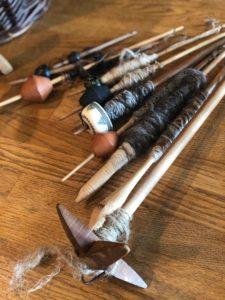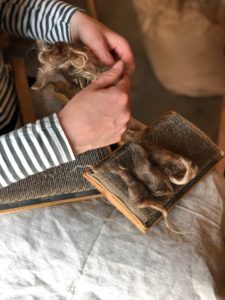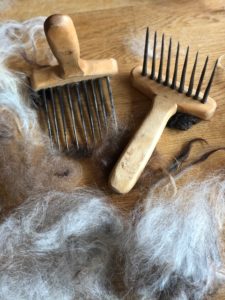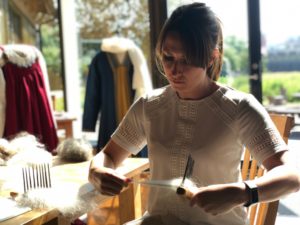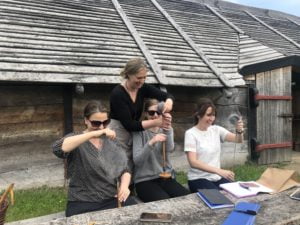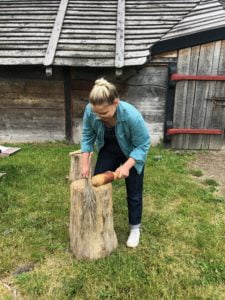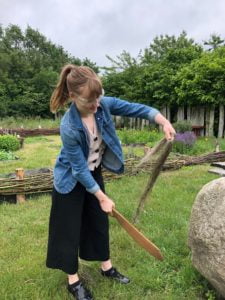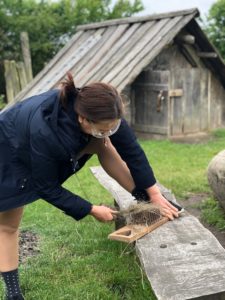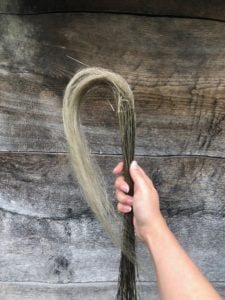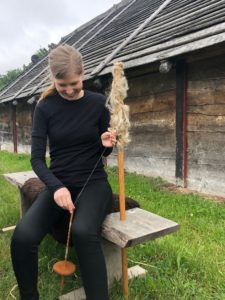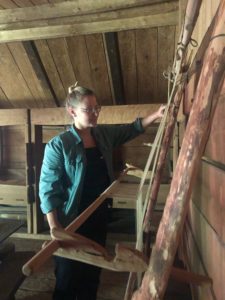Wool and flax preparation
Date: 11–12 June 2019
Location: Trelleborgen Viking Fortress and Museum, Sweden
Expert maker: Linda Oloffson
Although the use of silk in garments, accessories, and trims spread across social classes in the sixteenth century, wool and linen continued to feature at the lower social levels as the most important materials in all every day clothing—including undergarments, overdresses, outer garments, and accessories such as detachable sleeves, scarfs, and aprons. The quality of different types of woollens and linens, however, varied greatly and depended on the type of raw material, and the degree of care and finishing with which it was processed. But how were wool and linen fibres actually prepared? What skills were needed to produce good quality fibres? And how could the waste material be used effectively?
In order to answer some of these questions, our team participated in a linen and fibre preparation course, organized at Trelleborgen Viking Fortress and Museum—a place dedicated to introducing and preserving historical textile craft methods. Guided by the museum curator and researcher, Linda Olofsson, the workshop took place in the reconstructed Viking age surroundings, where even the fire had to be prepared using a fire-steel and a stone. The aim of this workshop was to engage historical fibre production and explore the process of production from the raw material to the finished fibre, in order to increase our understanding of:
- How were wool and linen fibres prepared in a domestic setting?
- What skills and historical tools were needed to produce high quality wool and vegetable fibre?
- What stages were involved with the production, and how long did it take to prepare good quality fibre?
- How was value constructed in wool and linen?
- How can we reconstruct historical experience, and what is the meaning and value of incorporating experiential archaeology in cultural studies of dress?


